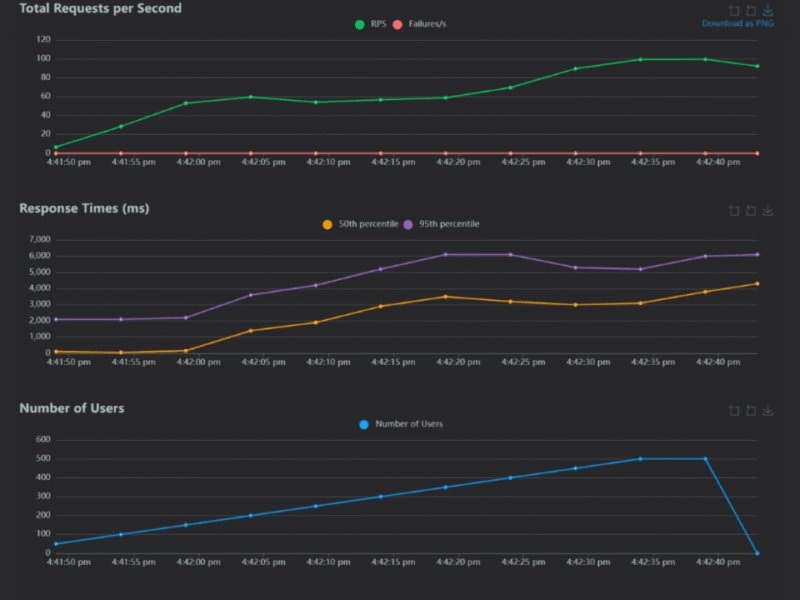Let us own up to the fact that automation has turned the world upside down in unimaginable ways. Automation has emerged as an influential factor in transforming industries, leading to unprecedented technological growth and enhanced productivity within business operations.
Amidst all the innovations automation brings, there are questions regarding the reliability of fully automated processes, especially in high-risk sectors like healthcare and finance, where minor errors can lead to fatal outcomes.
Leveraging a fully automated system is more like operating on autopilot mode; however, there’s some risk involved if not monitored for performance and efficiency. These automation platforms might make mistakes when presented with ambiguous or exceptional use cases outside their programmed parameters.
Additionally, unsupervised automation processes may not be suitable for sectors that require strong client relationships and personalization. Relying solely on automated systems may lead to ineffective client interactions and more errors, creating a communication gap and misaligning organizational objectives.
In a nutshell, automation platforms function very well on a superficial level but lag in processes that involve understanding the nuances or contextual correlations between data points. Such processes demand human intervention to monitor and evaluate the generated output.
Manual processing can take a lot of time and energy; while automation saves time, it is prone to errors when left unattended. So what is the fix? The right solution cannot be achieved by ditching either of these solutions; striking a balance between human intelligence and AI-driven automation is the key. This is where human-in-the-loop makes its debut.
What is Human-in-the-Loop?
Human-in-the-Loop is more like a unique blend of human intelligence and machine power, wherein human experts influence the learning process of LLMs. XDAS simplifies this synergy by integrating HITL in training, validating, and optimizing machine learning models, from building algorithms to running workflows.
During training, human experts demonstrate process workflows to train models. Once the systems capture the workflow function, XDAS ensures human reviewers validate and fine-tune outputs for optimal performance. Importantly, human intervention doesn’t end with deployment—ongoing input allows XDAS to adapt and improve in response to evolving real-world scenarios, strengthening the active learning curve.
To simplify things, let us picture the working of the real-world scenario of Human in the Loop application in fraud detection:
The process starts with automation, the primary tracking layer that processes massive transactional data using ML algorithms. These algorithms use predetermined rules to look for underlying patterns or any unusual trend in spending frequency or transaction location.
If an unusual transaction is flagged, it is passed for human review. Human experts delve deeper by tapping into the grey area with their contextual understanding; for instance, they look for anomalies in recent travel history and purchasing patterns. This will ensure the rightfulness of flagged transactions by avoiding false positives.
After the final human decision-making, the data is fed back onto the enterprise systems as it can help them learn subtle considerations like seasonal spending while assessing fraudulent activities. This way, automation platforms are exposed to learning new tactics that fraudsters devise in real-time.
Human-in-the-Loop approach for industries
A significant advantage of using a human-in-the-loop approach is early detection and elimination of bias. Human-evaluated processes exhibit a lesser probability of developing bias than unsupervised machine algorithms. In short, the human-in-the-loop approach ensures ethical integrity by being a quality control in decision-making processes across different industries.
Banking and finance
The banking and finance industry leverages HITL methodologies in fraud detection, document verification, data extraction, and loan approval processes. In this context of loan approval, automation platforms first process loan applications by considering predefined quantitative factors such as income levels and credit scores as qualifying criteria.
However, these systems may overlook qualitative aspects that significantly impact an applicant’s financial health, such as recent life changes or unique personal circumstances. By incorporating HITL, loan approval officers can interrogate whether the ML-defined factors are significant enough to influence approval decisions. This way, banks and financial institutions can ensure a more comprehensive evaluation of loan applications, preventing unjust rejections.
XDAS brought similar efficiency and accuracy to an investment firm dealing with unstructured financial data by revolutionizing financial data processing. By employing HITL for quality control, XDAS added an extra layer of human validation to automated workflows. This approach delivered the most accurate and actionable financial data and ensured compliance with stringent industry standards.
Similarly, XDAS empowered insurance companies by leveraging HITL in claims processing, underwriting, and risk assessment models to streamline informed decision-making processes based on human-verified reliable data.
Sales
Handling the sales processes manually, from lead generation to closing deals, can be tiring. Instead, automation platforms like XDAS can take care of lead qualification using predetermined rules; post-lead qualification, salespeople can assess the potential of qualified leads based on their market knowledge and customer interactions.
Customer engagement requires emotional intelligence, empathy, and intuitiveness, which only humans can excel in. Having humans address complex, sensitive situations can make customers feel valued and adds a personal touch, ultimately increasing customer satisfaction. By leveraging Human-in-the-Loop, salespeople can focus on quality customer engagement to increase overall sales conversions.
Marketing
Moreover, Human-in-the-Loop can be used to devise the best marketing campaigns. For instance, Machine learning algorithms can identify high-value and high-risk customers by tapping records of past purchase data and churn rates.
Based on data, marketing segmentation can be done to reach target customer segments; after this, humans can craft personalized campaigns by understanding the cultural trends, emotional triggers, and customer behavior, ultimately influencing purchasing decisions.
Healthcare
Human-in-the-Loop is much appreciated in the medical field, where exceptional cases are high, especially in data annotation. In rare medical cases, the ML algorithms will find data labeling challenging as only a few datasets are available on record, necessitating human input. The feedback loop mechanism in HITL facilitates adaptive learning, reducing human intervention over time.
Also, data extraction in healthcare is another area for HITL implementation because it involves unstructured data in varying formats, such as imaging reports, clinical notes, free text records, and issues concerning patient privacy. Input from the actual users of datasets can establish a clear scope for workflow transparency and accountability. In this case, medical experts with an understanding of the unique characteristics of healthcare data can be looped.
Things to remember in the Human-in-the-Loop approach
One of the crucial things to consider while implementing the human-in-the-loop approach is setting and monitoring performance metrics that balance qualitative and quantitative factors.
Frequent assessments must be conducted to evaluate the effectiveness of automated workflows, fostering a culture of adaptive learning and continuous improvement.
To wrap it up
While the human-in-the-loop approach is highly beneficial, it comes with certain costs, including training materials, human resources, and added expenses for hiring experts with specialized domain knowledge.
XDAS’s HITL-enabled solutions combine human expertise with AI-driven automation, ensuring accuracy, adaptability, and confidence in every step of your workflow. This makes XDAS the best choice for automation with HITL.
Human-in-the-loop has eliminated fears and ensured that automation would not take away human jobs but instead elevate human work. Isn’t that the kind of synergy we all desire in the near future?
Start your automation journey with us; reach out to our experts!

